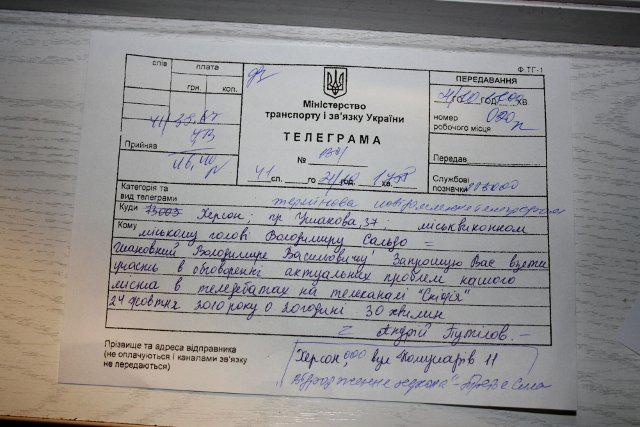Ukrposhta Blank Rekomendovanogo Povdomlennya
Abstract Following the growth and geographic expansion of wolf ( Canis lupus) populations reintroduced to Yellowstone National Park and central Idaho in 1995–1996, Rocky Mountain wolves were removed from the endangered species list in May 2009. Idaho and Montana immediately established hunting seasons with quotas equaling 20% of the regional wolf population. Combining hunting with predator control, 37.1% of Montana and Idaho wolves were killed in the year of delisting. Hunting and predator control are well-established methods to broaden societal acceptance of large carnivores, but it is unprecedented for a species to move so rapidly from protection under the Endangered Species Act to heavy direct harvest, and it is important to use all available data to assess the likely consequences of these changes in policy. For wolves, it is widely argued that human offtake has little effect on total mortality rates, so that a harvest of 28–50% per year can be sustained. Using previously published data from 21 North American wolf populations, we related total annual mortality and population growth to annual human offtake.
Contents Ch.1 Monte Carlo Method and Integrals Ch.2 Introduction to Bootstrapping Ch.3 Least Squares Models and their Diagnostics Ch.4 Robust Regression in R. Latest fiatecuscan 362 crack fiat ecu scan keygen free and full version 2016.
Contrary to current conventional wisdom, there was a strong association between human offtake and total mortality rates across North American wolf populations. Human offtake was associated with a strongly additive or super-additive increase in total mortality.  Population growth declined as human offtake increased, even at low rates of offtake. Finally, wolf populations declined with harvests substantially lower than the thresholds identified in current state and federal policies. These results should help to inform management of Rocky Mountain wolves. Citation: Creel S, Rotella JJ (2010) Meta-Analysis of Relationships between Human Offtake, Total Mortality and Population Dynamics of Gray Wolves ( Canis lupus).
Population growth declined as human offtake increased, even at low rates of offtake. Finally, wolf populations declined with harvests substantially lower than the thresholds identified in current state and federal policies. These results should help to inform management of Rocky Mountain wolves. Citation: Creel S, Rotella JJ (2010) Meta-Analysis of Relationships between Human Offtake, Total Mortality and Population Dynamics of Gray Wolves ( Canis lupus).

PLoS ONE 5(9): e12918. Editor: Geoffrey Clayton Trussell, Northeastern University, United States of America Received: April 30, 2010; Accepted: August 22, 2010; Published: September 29, 2010 Copyright: © 2010 Creel, Rotella. This is an open-access article distributed under the terms of the Creative Commons Attribution License, which permits unrestricted use, distribution, and reproduction in any medium, provided the original author and source are credited. Funding: This work was funded by the National Science Foundation.

The funders had no role in study design, data collection and analysis, decision to publish, or preparation of the manuscript. Competing interests: The authors have declared that no competing interests exist. Status of US Wolf Populations Following their extirpation by direct harvesting across most of the United States, gray wolves ( Canis lupus) were among the 14 mammals originally listed by the U.S. Fish and Wildlife Service under the Endangered Species Preservation Act of 1966. This legal protection was renewed under the Endangered Species Act of 1973, and wolves are now considered endangered in 16 states. Following steady growth of the wolf population of the Western Great Lakes region, this population segment was down-listed to threatened status in 1978.
A proposal for delisting in Minnesota and Michigan was initiated in 2000 and remains under legal appeal. Following reintroduction into Yellowstone National Park and central Idaho in 1995–1996, wolves in the Northern Rocky Mountains Recovery Area grew to a minimum of 1,645 wolves at the end of 2008. This population segment (including all or parts of Idaho, Montana, Oregon, Utah, Washington, Wyoming) was delisted in 2009, a decision that also remains under appeal. Legal authority for wolf management passed from the US Fish and Wildlife Service to state agencies in this region, and public hunting seasons were initiated in Idaho and Montana, with quotas of 255 (220+35 within the Nez Perce Tribal Treaty Area) and 75 wolves, respectively –. These quotas represent an annual harvest of 20% of the regional population. Quotas were filled in 7 of 12 Idaho regions with a total harvest of 188 wolves.